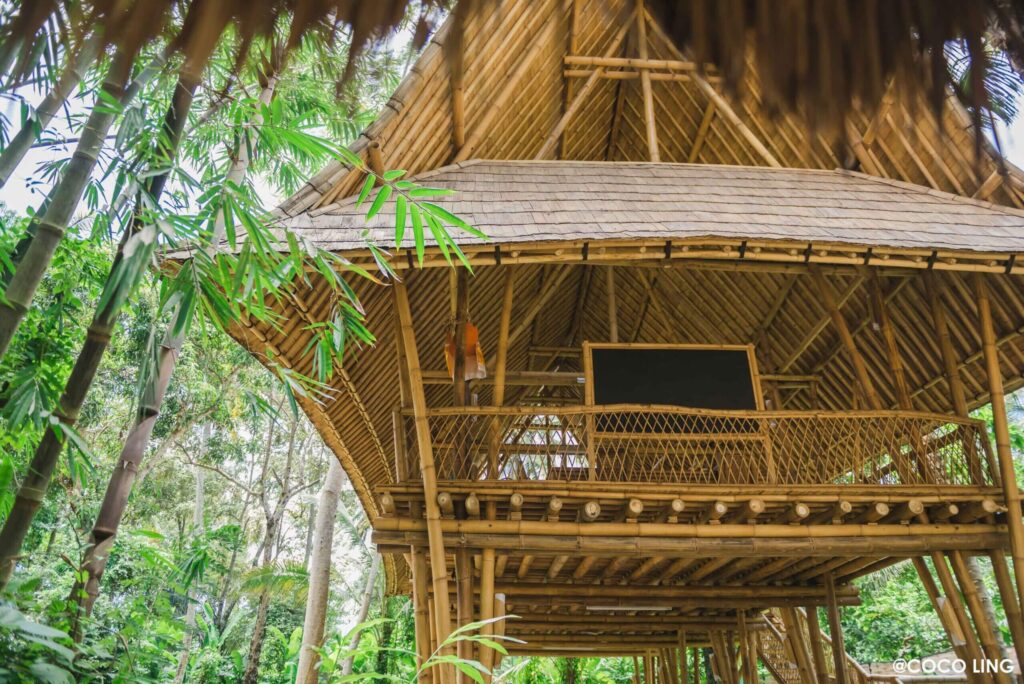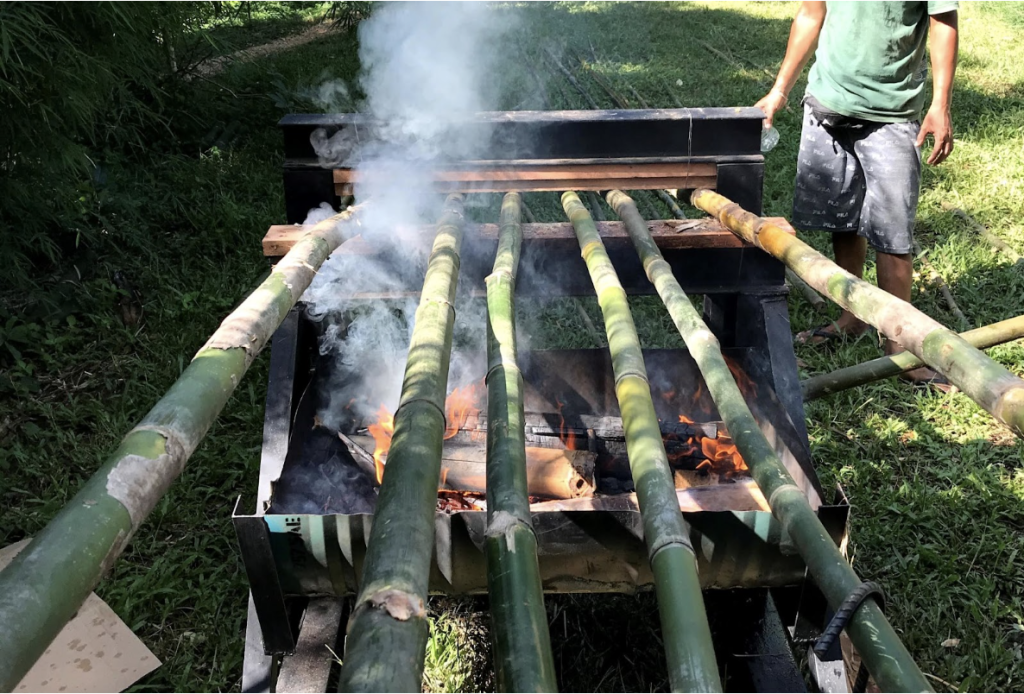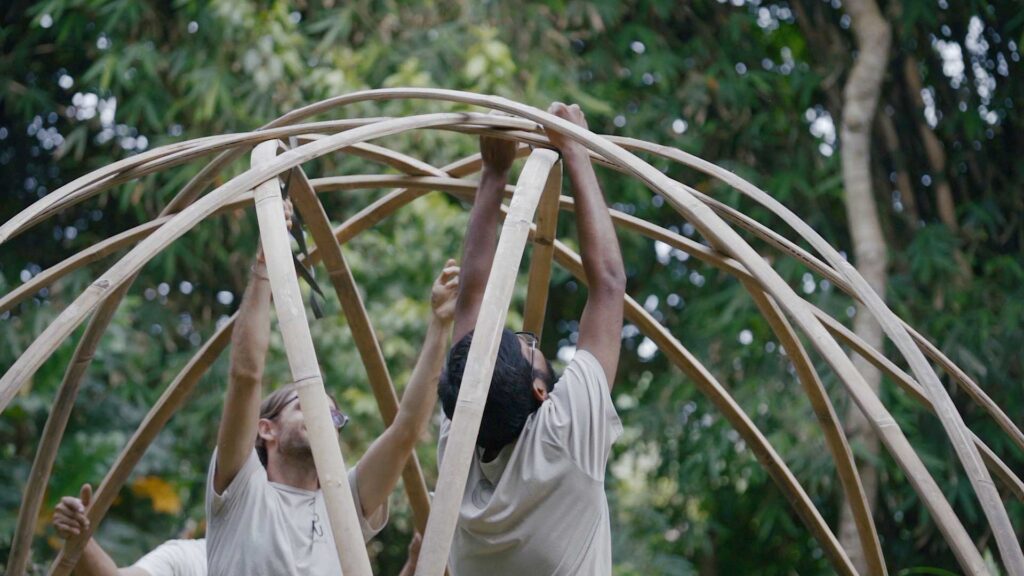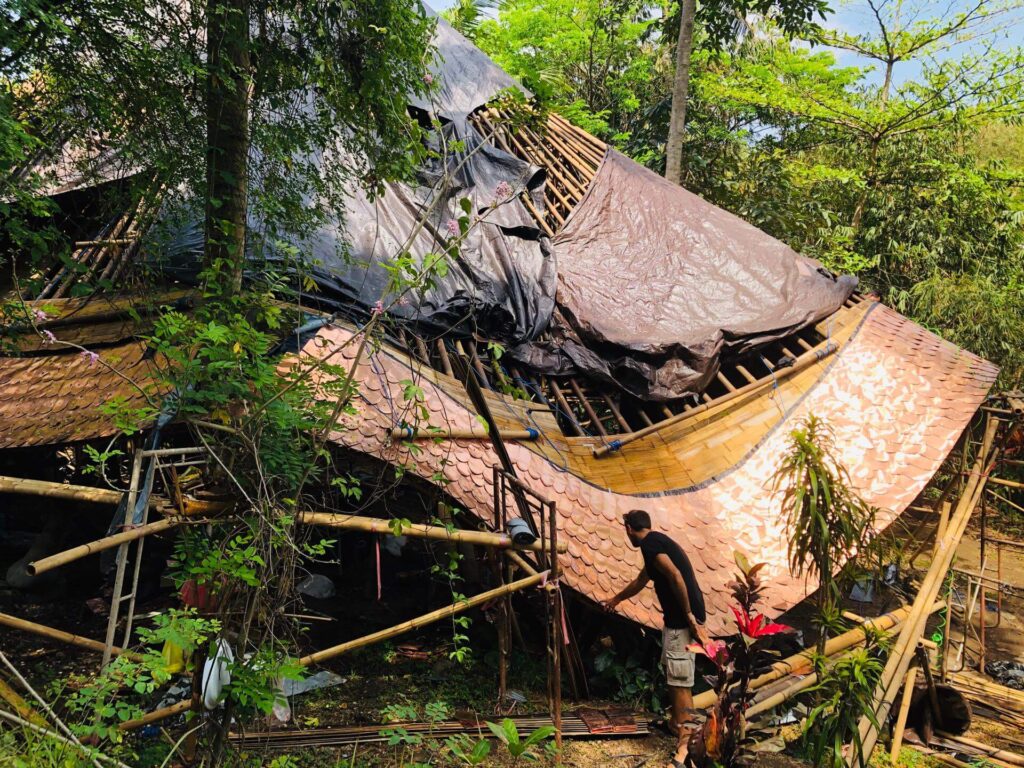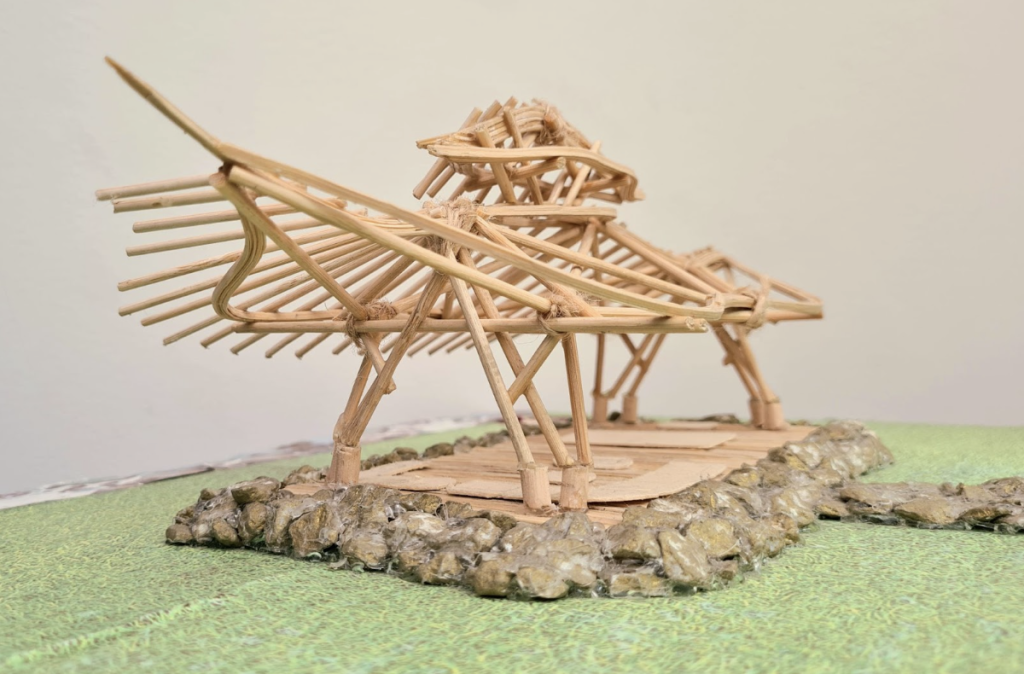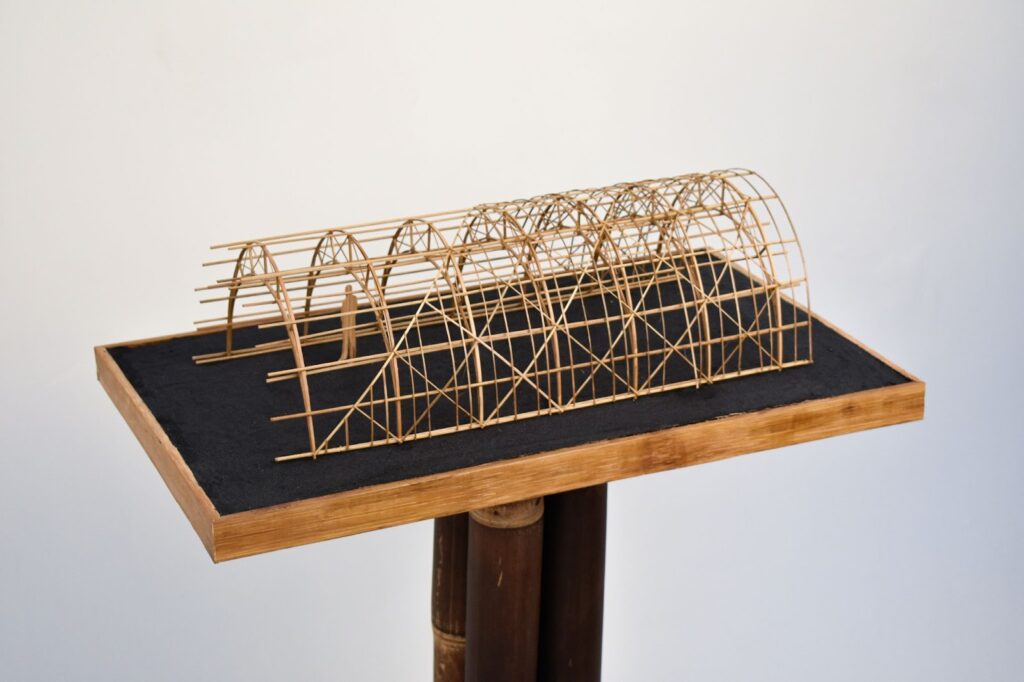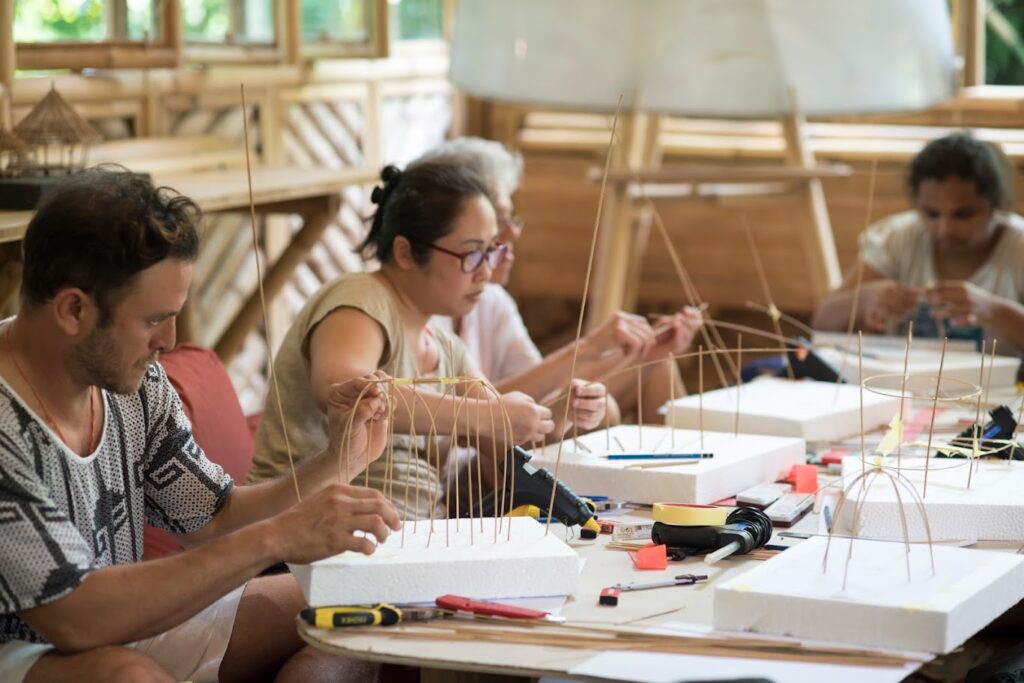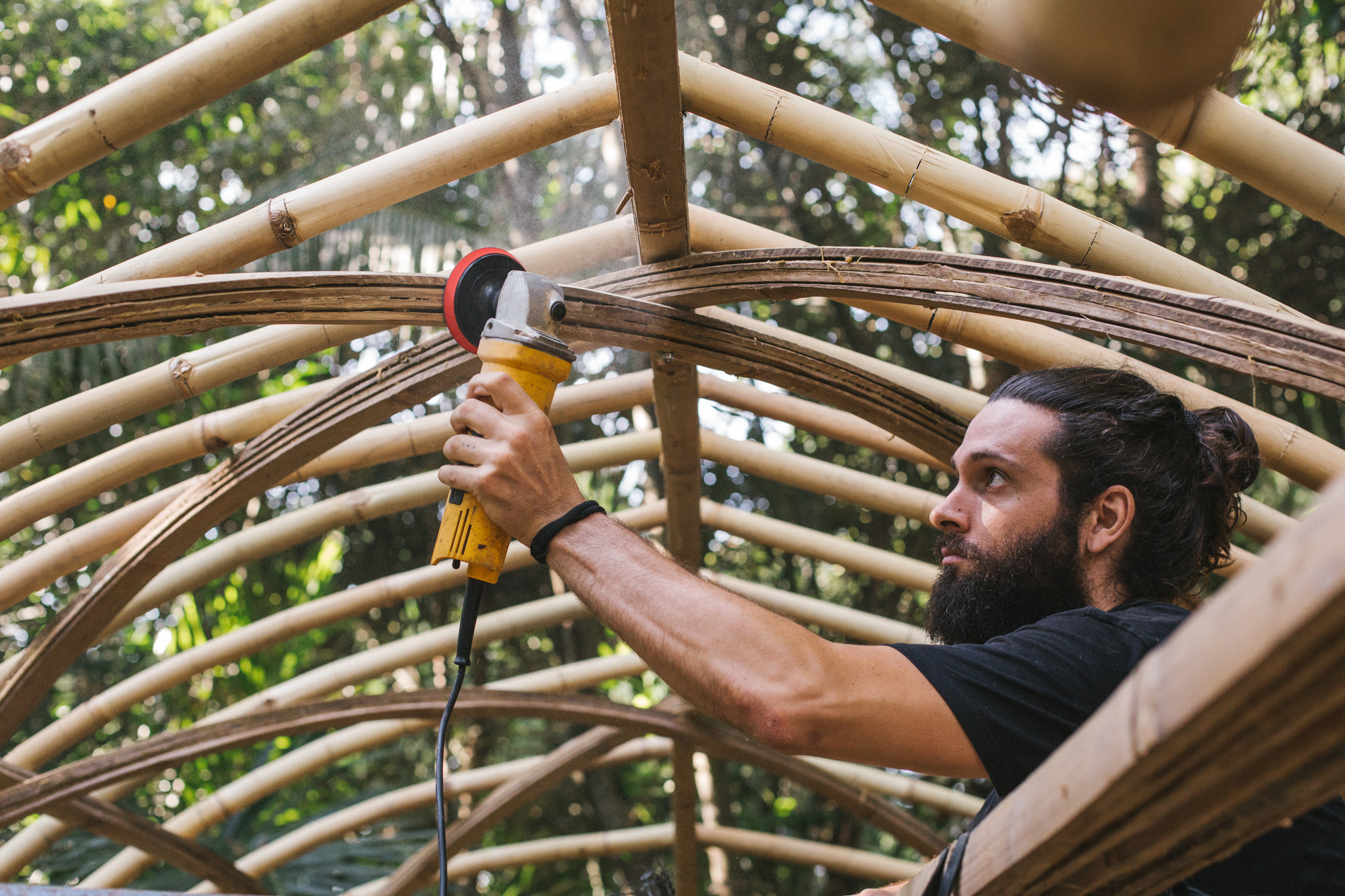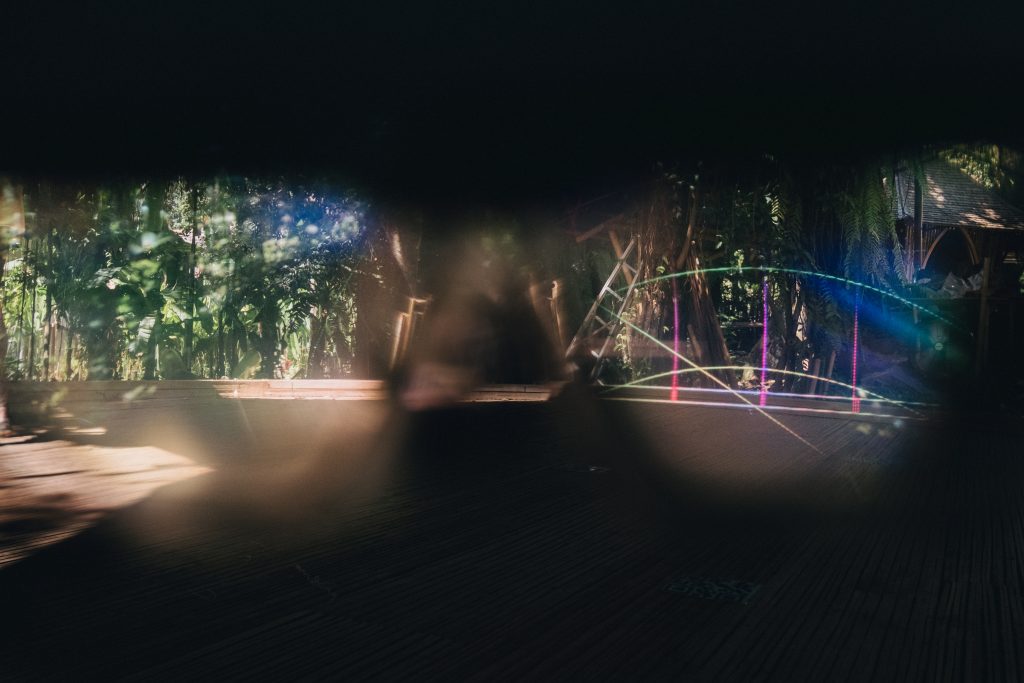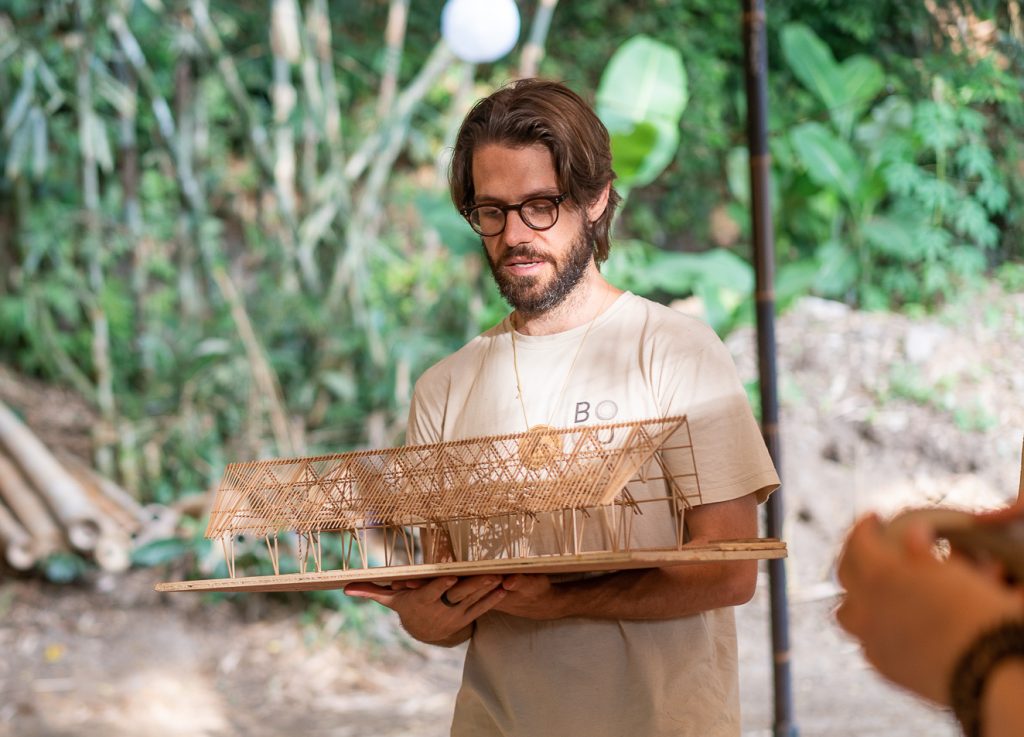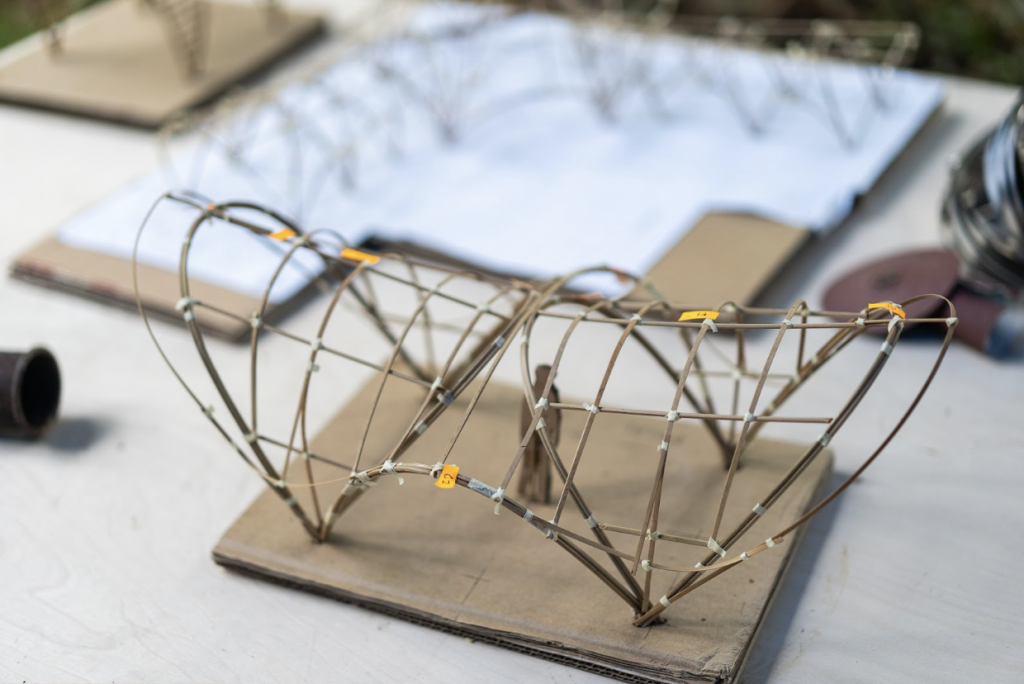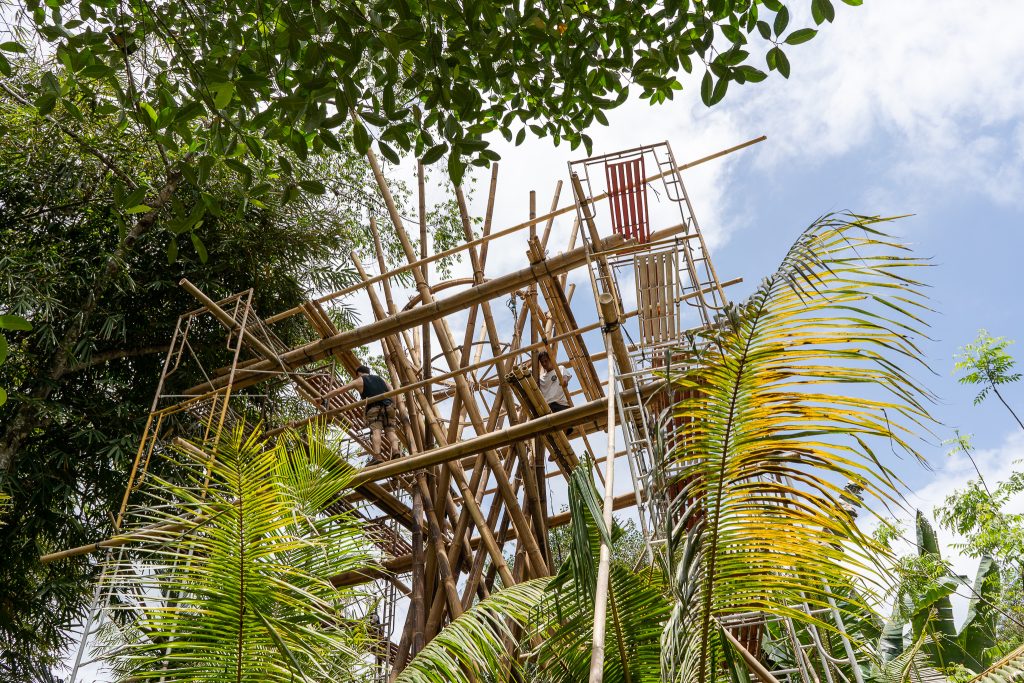How to Get Started with Bamboo Model-Making
By | May 1, 2025 | Design -
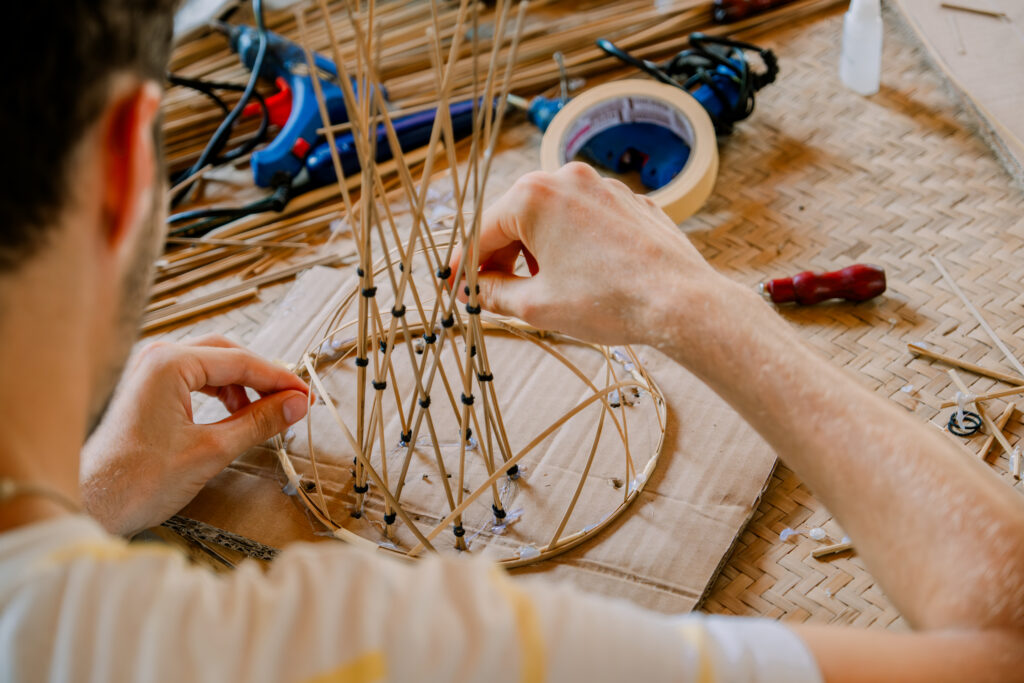
Making a bamboo model is an essential part of the process of building with bamboo. This article will go through and explain different aspects of the process.
Making a bamboo model is an integral part of the bamboo design process. It is a great way of visualizing ideas, iterating solutions and estimating cost and quantities. Previously, this blog has written about the reasons of why it is important to work with models, and which tools that are useful in the process. This article will instead focus on 3 steps of how to get started with model-making and improve your workflow.
This article will look at:
By considering these three areas, you will increase the value and versatility of the bamboo models you create.
Related: The Top 5 Reasons Why You Should Build Bamboo Models
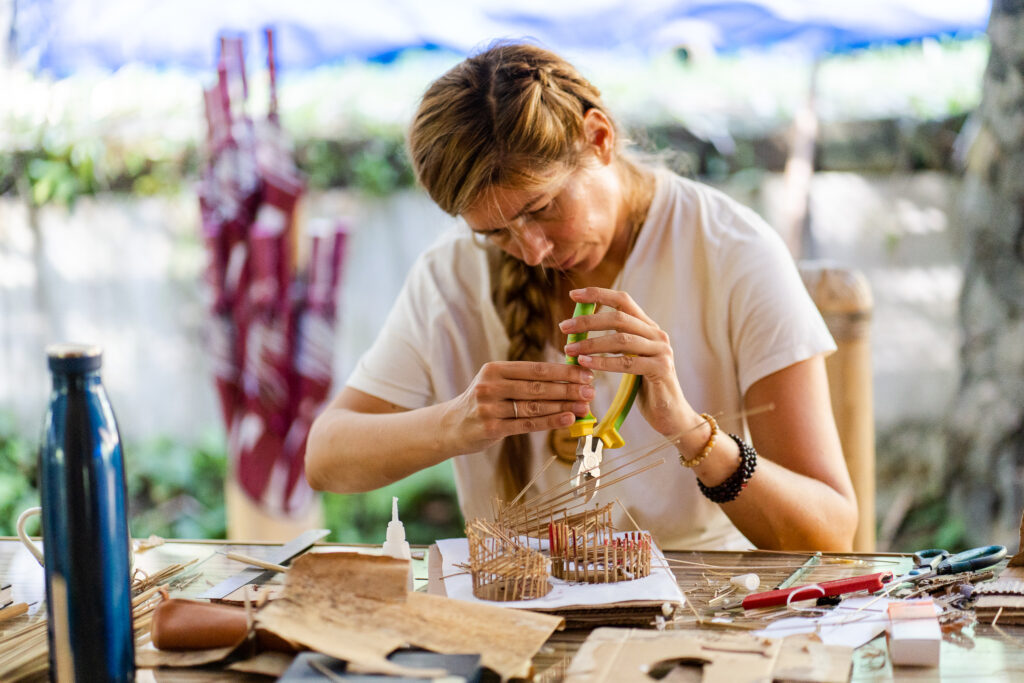
Before modeling, it is important to think about the intentions and objectives for creating the model. After that is decided, it is easy to conclude which scale to use and how clean and precise the model should be. Some common types of models are sketch models, concept models, and presentation models.
Sketch models are made fast and used as a tool for iterative thinking. These are good for the initial phase, as they are usually used for the process to brainstorm your ideas and concepts. Meanwhile, concept models are mainly a communication tool. They do not need to be completely realistic or perfectly crafted, as long as the main concept of the project is conveyed. Finally, the presentation model should be as close to reality as possible. This model will be used to sell the idea to the clients and will be used by construction workers to check/consult with on site for the construction.
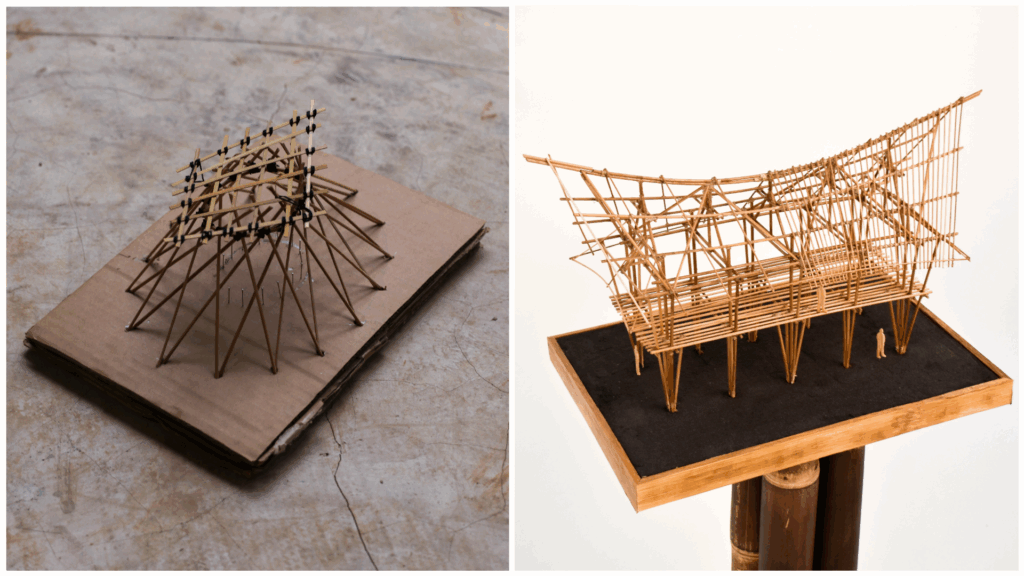
Related: Everything You Need in Your Bamboo Model Making Kit
When deciding on the scale it is important to think about what to show. During a process it is normal to work through different scales to convey different complimentary information. Scales work using ratios. For example, a model that is at 1:100 scale means that 1cm in a model represents 100cm in real life.
There are mainly 4 different scales to consider, which will highlight elements of the site, depict the building, express details, or serve as a mock up/prototype.
The Site Model: The site model depends on the size of the project, but somewhere between 1:250 for a small project to 1:500 (or even 1:1000) for larger projects makes sense. The site model represents the the building and how it fits into the surrounding context.
The Overall Structure: For the model that shows the overall form of the building, it is also dependent on the size of the project. However, typically around 1:100 or 1:200 is best to showcase the building clearly.
Detail Models: Between 1:25 to 1:50 is a good size to highlight and isolate a certain part of the project. Detail models are often most useful for the builders, who will use them to understand how to the construct of certain components of the structure.
Mockups/Prototypes: 1:1 – 1:5 scales are good sizes to showcase the construction in detail. These are most useful for the team on site to test out ideas at a full scale.
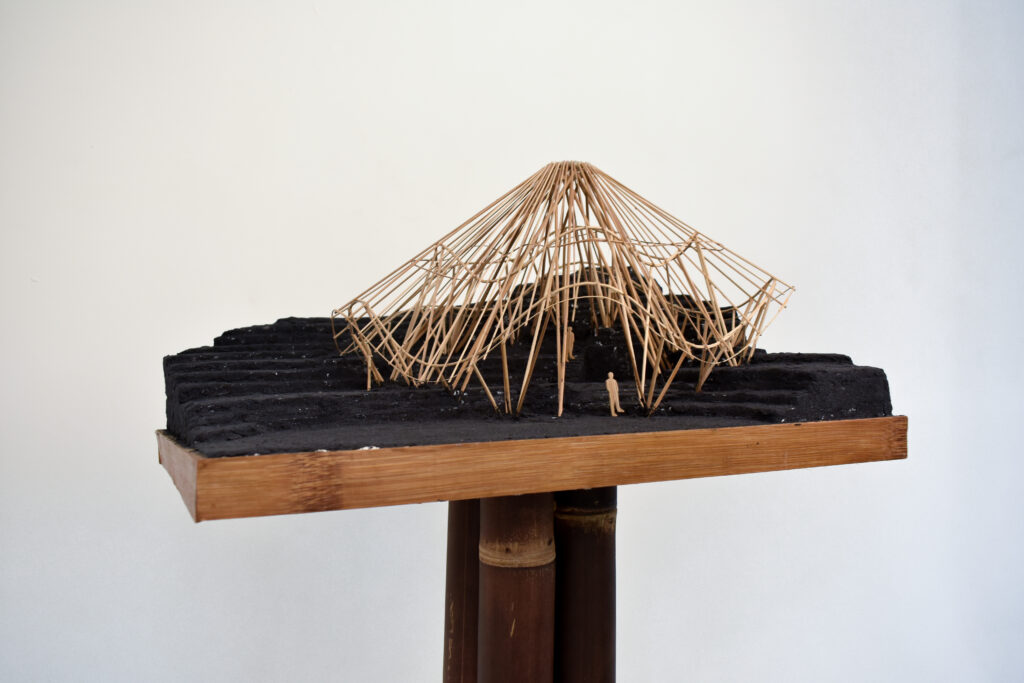
Related: The Number One Skill Every Aspiring Bamboo Architect Needs
When making a presentation model there are some tips that can help strengthen its appeal. First of all, it is important to work cleanly and neatly, particularly by having clean finishes for the joints. One of the ways to do this is by using superglue that dries transparent. While hot glue is easy to use, the finishes get bulky and messy, which makes the model look sloppy.
Another important idea is how to showcase the model through a picture to tell a story. Try incorporating different materials that resemble the context of the real site. For example, using real rocks, sand, bricks, or grass can build on the understanding of the context. In the Kubu model (below), black sand and plexiglass were used to represent the ground and pond on site. You may also want to feature different materials (besides bamboo) if you’re including other materials in the construction. This way, you can enhance the visual appeal of the model and also help to convey the idea behind the proposal with clarity.
Lastly, by adding scale figures, it will help the model become more powerful. The story-telling will become more engaging and the scale and intentions of the proposal will be more clear.
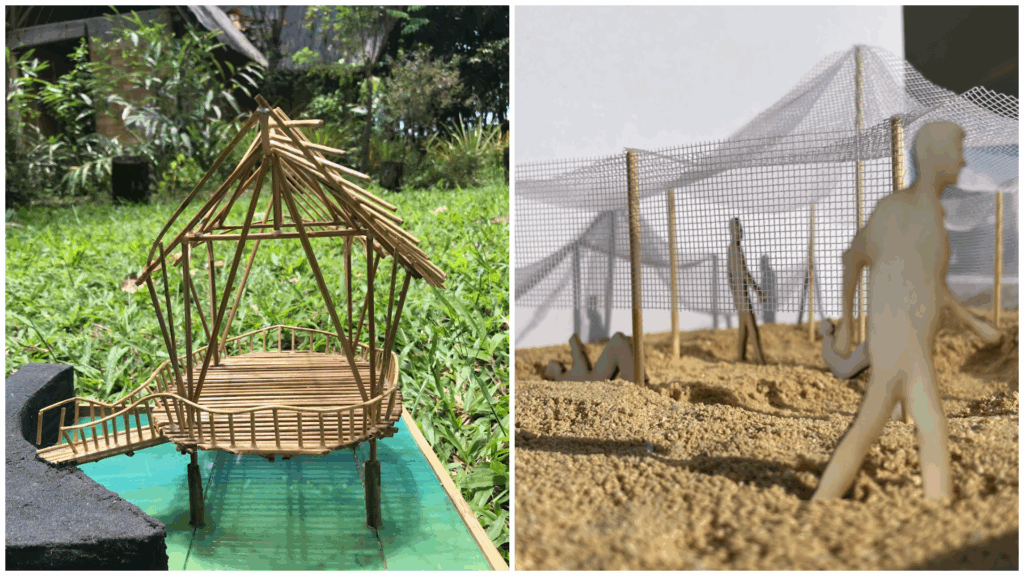
Overall, when crafting a bamboo model, it is crucial to consider the purpose of the model. In turn, this will impact the scale that you choose to represent your ideas. Finally, by including scale figures and other materials to represent the site, you can indicate how people will interact with the space and how the building is part of the overall context.
Images courtesy of Jonathan Daraman Kyvik and Bamboo U.
Interested in learning more about designing and building with bamboo models? Join our Principles of Bamboo Design course HERE!


